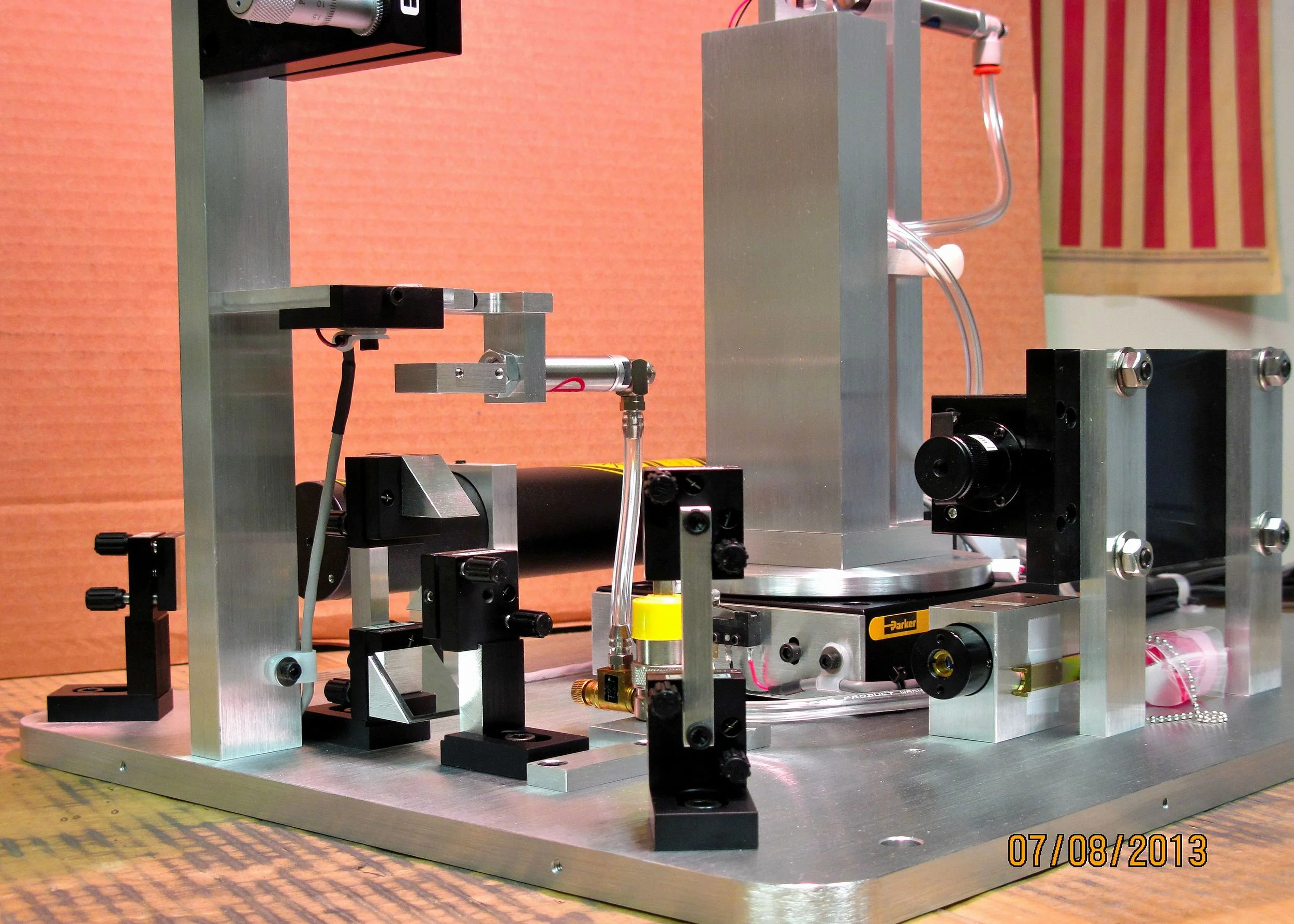MEASURING INDEX, BIREFRINGENCE, AND THICKNESS OF FLEXIBLE AND BULK POLYMERS FOR DISPLAY, OPTICAL, PACKAGING AND OTHER APPLICATIONS.
The Model 2010/M has been extensively used to characterize index/birefringence of flexible and rigid bulk polymer materials such as PET, polyethylene, PVC, polystyrene, polypropylene, polyimide, acrylic, polycarbonate, epoxies, adhesives, silicones and other encapsulants. The system is also widely used to measure thickness and index of coatings on these materials. Applications cover an extremely wide range of uses in a wide range of very different industries such as electronic displays, optics, product/food packaging, encapsulants for solar cells and other products, and automotive products. Measurements can be made on flexible films, rigid flat samples, and even convex surfaces of non-flat or cast samples.
Advantages include:
- No matching fluid required
- Automated 20 second measurement – no operator subjectivity
- Measures index in x, y, and z directions (or any arbitrary direction in the plane of the sample surface)
- Tolerates non-flatness or poor sample surfaces.
- Wide index measuring range (1.3-2.0) with a single prism
- Can measure index at a variety of wavelengths from 405-1550 nm or dispersion (index vs wavelength)
- Can measure index vs temperature (RT to 200° C)
- Can measure index profiles for high index surface skins or gradients.
Applications include:
- Measuring index anisotropy/birefringence/orientation in PET or other stretched or extruded materials
- Measuring density/crystallinity in polyethylene, PET and other materials
- Measuring refractive index and thickness of coatings on flexible polymer substrates
- Ensuring close index matching for epoxies, adhesives, silicones and other encapsulants
- Measuring index of multiple (2-3) layers for coextruded materials
The basic measurement principle for measuring index of bulk materials is shown below:
If a material of index n is in contact with a prism of index np, as the sample and prism are rotated with respect to the stationary laser beam, light striking the base of the prism will be totally reflected to the system photodetector until the angle of incidence becomes less than the critical angle, Θc, where
The Model 2010 determines the critical angle automatically and since np is well known, the film index is easily determined from equation (1). A polarized laser is used and index can easily be measured along any direction parallel to the sample surface. With the TM option polarization of the laser can be rotated 90 degrees and the index perpendicular to the surface can be obtained.
Regardless of application or industry, the primary advantage of the 2010/M is that it rapidly and easily measures index and birefringence for both rigid and flexible polymer materials and even irregular “blobs” of cured materials. The flat and regular sample surface required by other techniques is not a requirement in the prism coupling technique because the measurement is made over only a small area (typically 1 mm diameter). For flexible samples, the coupling head planarizes a small area on the surface when it forces the sample against the prism.
Measurement of index in x, y and z directions has been used to study a wide range of flexible polymer properties important in optical and electronic display applications and such applications now comprise the single most important use for the 2010/M (refs. 1-3)
Measurement of x, y, and z indices has also been used to study density (ref. 5), orientation (refs 6-7) and other properties in polyethylene, polypropylene and other polymers.
The Model 2010/M also offers unique capabilities for characterizing index gradients due to high index skins at the surface of the material that can result from processing conditions. In some cases, individual waveguiding modes may exist in the high index skin, and it may even be possible to calculate an approximate thickness and index (or index profile) for the skin layer.
In addition, since the 2010's index measurement probes primarily the first few microns at the surface of the material refractive index data can be obtained for both sides of the film and sample-side differences (e.g., preferential cooling rates for blown films) can be studied.
For coatings, the coated side of the sample is brought into contact with the prism and thickness and index are easily measured (see Theory of Measurement). Minimum coating thickness measurable depends on coating and substrate type but typically ranges from 300 nm to one micron. Thin (few micron) co-extruded layers can also be measured similarly to coatings. For thicker coextruded films, if the higher index layer is at the surface, critical angles for both the top- and the under-layers may be visible allowing measurement of index for both layers.
References:
1. M-C Choi, J. Wakita, C-S Ha, and S. Ando, “Highly transparent and refractive polyimides with controlled molecular structure by chlorine side groups”, Macromolecules, 42, 5112 (2009)
2. S. Hwang, Y. Kim, Y-T Kim, S. Nam, and S-D Lee, ”Design of a Highly Efficient Lightguide Plate Using an Anisotropic Layer with Polarization-Separating Microstructures”, Mol. Cryst. Liq. Cryst., 499, 128 (2009).
3. V. Prattipati, Y. S. Hu, S. Bandi, S. Mehta, D. A. Schiraldi, A. Hiltner, E. Baer, “Improving the transparency of stretched poly(ethylene terephthalate)/polyamide blends”, J. of Appl. Polymer Sci., 99, 225 (2006).
4. R. J. Samuels, “Applications of refractive index measurements to polymer analysis”, J. Appl. Pol. Sci., 26, 1383 (1981).
5. R. Krishnaswamy, and J. Janzen, AExploiting refractometry to calculate the density of polyethylene: the Lorenz-Lorenz approach revisited@, Polym. Testing, 24, 762-765 (2005).
6. S. Srinivas and P Brant, “Structure and properties of oriented polyethylene films”, Polym., Engr. Sci., 43, 831 (2003).
7. Y.J. Lin, P. Dias, H.Y. Chen, A. Hiltner, and E. Baer, “Relationship between biaxial orientation and oxygen permeability of polypropylene film” Polymer 49, 2578(2008).
SAMPLE MEASUREMENTS
In-plane index of thin PET sheet in x (MD) and y (TD) and z directions (click on figures to enlarge) at 633 nm
Coating on flexible polyester film at 450 nm
Thickness and index (bulk thickness)
Index gradient at surface of PET and pattern and curve
Coating on rigid polymer eyeglass lens at 532 nm.



